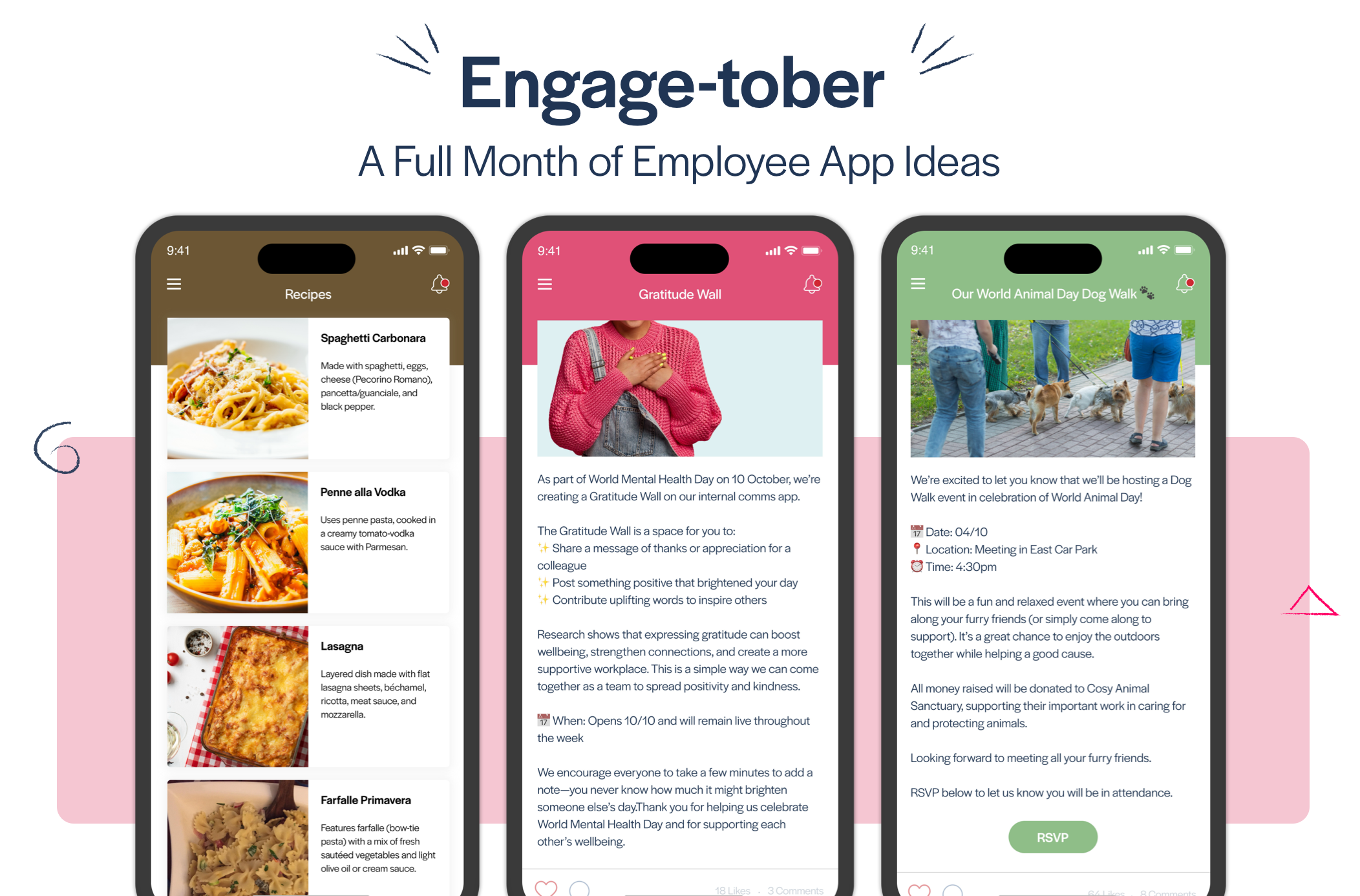
Blog
How an App Can Support & Engage Local Authority Employees
Local governments in the UK and Ireland had been feeling pinched for more than a decade. Then came COVID-19, and with it unforeseen pressures. Here, we look at the current issues facing local authorities, their impact on employees, and ideas for improving engagement, communication and well-being with an employee app.

Local governments don’t just provide services and consume taxpayer money. As leaders in the community, they support economic stability, are instrumental in creating a sense of place, and enact needed change.
But for years now—in many cases predating the recession – local authorities have constantly been in the position of having to achieve all this with fewer and fewer resources. In 2022, resources have never felt tighter and with the so-called Great Resignation hitting not just the private sector, but the public sector as well, that only means more pressure on staff who stay.
So, what are the challenges you’re facing in your local government role this year? Here are the top five for local authorities across the UK and Ireland.

#1 Pandemic recovery efforts
Regenerating communities and supporting local businesses in the wake of the extended global COVID-19 crisis is initiative number one. So many areas were hard hit, and the hits kept coming, causing job losses, shutdowns of local businesses, housing troubles, and social disruption, all culminating in as-yet untold economic fallout.
#2 Financial woes
Several UK councils face staggering financial distress and are on the verge of bankruptcy following two years of lockdowns and other pandemic strains. The need for funding reform existed prior to the pandemic, but the crisis intensified the chronic mishandling of finances. Many councils are asking for emergency cash and are struggling just to deliver basic services.
#3 Loss of staff
Reductions in staff are seen as one way to save on budget but become problematic themselves. Once again, even prior to COVID-19, job losses in local governments were high, squeezing those still serving in councils. The cuts continue as councils work to drastically trim budgets from every possible angle, and that diminishing capacity is compounded by the 64% of public sector employees looking to move elsewhere.
#4 A dispersed workforce
The employees that are still around aren’t together in a single, central location. This has always been the case, given the nature of the work performed and services provided by local authorities. But a deskless, email-less workforce without consistent access to Wi-Fi can mean a cut-off, less-informed workforce and can even lead to health and safety issues.
#5 Sustainability and social stewardship
Nine out of 10 councils have declared a climate emergency, making sustainability and climate action at the local level two urgent priorities for 2022. From reducing waste to addressing building regulations to decarbonising transit networks, strategies for effective change (and the funding to propel it) are being demanded at every level of government. Social care and programmes, too, including those for the elderly, children, and promoting equality, are additional initiatives requiring renewed attention and investment.
The Real Challenge: Engaging & Supporting Local Government Employees

Each of these challenges have implications on your employees, and the list of ways they are impacted is long. For starters: low pay, heavy workloads, a lack of recognition, and pandemic burnout.
And whilst there are a number of ways to tackle the compounding concerns and weighty responsibilities of local governments (including task forces and business plans) the plain truth of the matter is that when the people serving in local governments are discouraged, disconnected and unengaged, affecting change and nurturing communities is far more difficult to do.
So how can you encourage, connect, and engage your employees instead—despite the fact that they are both spread thin and spread out? Proximity and capacity are only part of the problem. Using outmoded communication technologies (such as email and intranet) only magnify those issues, because they wind up leaving many employees out of the loop.
Local authorities are finding that they must modernise their internal communications with upgraded technology. Many (amongst them the Antrim and Newtonabbey Borough, Meath County and Kildare County councils) are turning to digital platforms, such as employee apps, to enable more rapid information sharing, provide all employees with the tools they need to connect and collaborate, and create an environment in which employees can feel heard and recognised.
Can your communication do this? Here are four things an app can do to support local authority employees.

#1 Overcome communication barriers
The Kildare County Council in Leinster, Ireland, recently adopted an app from Thrive.App to improve internal communications and employee engagement during these trying times. A significant percentage of the Council’s 1,000 employees has no regular access to work email or a desk, yet the app can reach this dispersed workforce because updates and information are transmitted in real time to employee devices, whatever their location.
The Council uses the app to make the weekly newsletter, policies, procedures, and other basic information more accessible. They also leverage video features to further engage their staff.
#2 Foster a growth culture
Local authorities have been hyper-focused on crisis mode these past two years, leaving almost no room for learning and development. Creating and delivering opportunities for staff members to learn a new skill, tick off an important certification, or take a class—and then rewarding them with in-app employee recognition—helps drive engagement.
#3 Build unity and inclusitivity
One sure way to improve retention and drive engagement: make employees feel as though they belong. Belonging is a basic human need, and so it goes without saying that cultivating positive connections with others at work is part of a healthy work experience.
Ensuring that all employees have an opportunity to create content and weigh in on matters related to their role via an app is one way that employees can feel heard. An app can also provide ways for employees to interact with colleagues, both professionally and even socially.
#4 Improve retention
When employees feel in-the-know, connected with others at work, listened to, and recognized for their efforts, engagement improves. And a highly engaged employee is more likely to stick around.
Want to learn more? Click the button below to download our handy eGuide on how to increase employee engagement in local authorities.
Next Steps…
Local authorities have a responsibility to their employees as much as they do to their communities. An app can help workforces everywhere connect, access key information, and feel safer at work.
We’d love to hear from you. Contact us to learn more about how an app from Thrive.App can be specifically designed to support your local authority, and thereby your employees.









